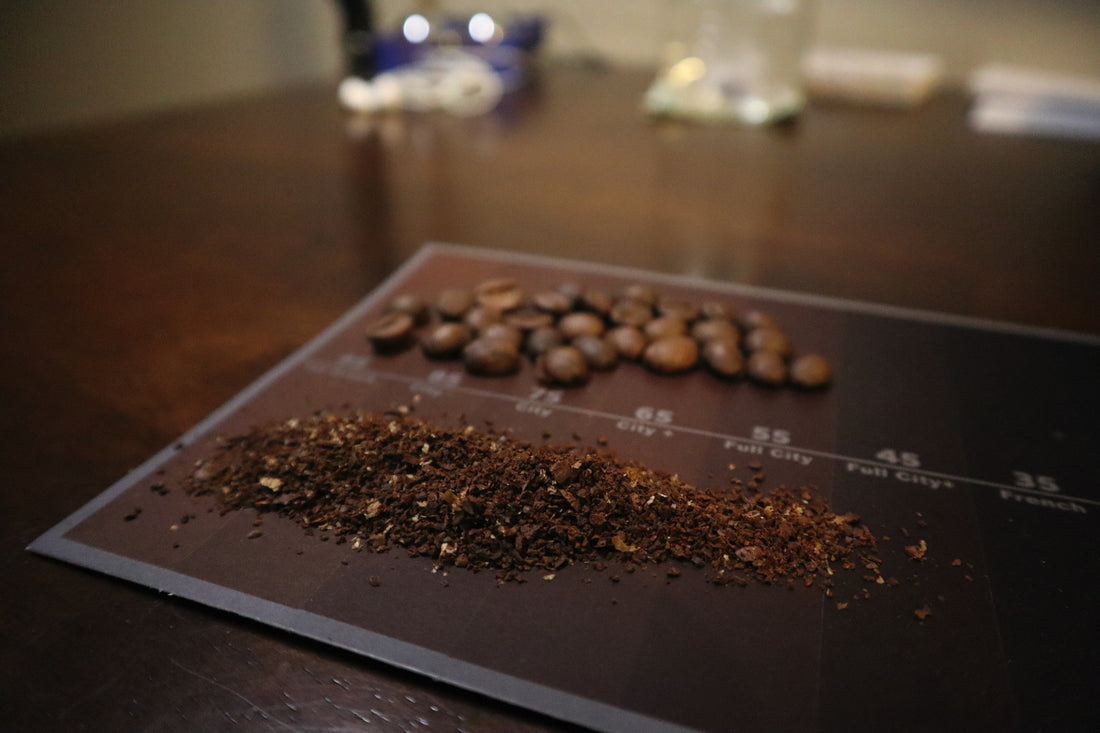
How to Find the Perfect Grind
Have you ever wondered how when you buy coffee and brew it with a pour over that sometimes it tastes way better than others? Well, you're not alone.
One of the reasons that happens is from manufacturer to manufacturer. When you buy a store bought coffee, the grind can change quite a bit. Sometimes it's more fine, sometimes it's more coarse.
And depending on your brewer of choice, whether it's a Hario V60, Melitta, Kalita, Zero or whatever, there are different grind sizes that can be used to get the best brew out of your dripper. That's what we're going to explore today.
For purposes of this conversation, I'm going to use the Bodum burr grinder. Largely because that's what I use every morning, and visually it's easy to show the grind settings.
If you're looking for a more special brew, we'll evaluate the difference between manual grinders and electric grinders in a later article. But for today, we're going to talk about how to get the perfect cup of coffee by evaluating the grind.
The Melitta dripper was really where pour over coffee started about a hundred years ago back in Germany. And it's what I've been using for the last 10 years to make a delicious cup of cup coffee. So today, I’ll be using that dripper to discuss grind size.
It took me a while to learn the importance of the right grind size, and when I started roasting coffee it got even harder because the grind depends on the bean and then the water temperature used to brew the coffee. Then to complicate it even more, even how much of a cup of coffee you are brewing and the water to coffee ratio is impacted by grind size.
Phew ... lots to think about. But today, we're going to keep it easy and just focus on finding the perfect grind.
The best way to tell if your grind is working for you or not. Pay attention to these two things.
First, how long does it take to brew a cup of coffee?
It’s either slowing the water down too much or it's not allowing enough of the flavor to move into the water during the brew cycle and the water is moving too fast.
Secondly, pay attention to is the taste. The taste of your coffee will determine what the perfect grind is for you with that coffee.
So with the Melitta for me, I typically start with a little bit finer than medium grind, maybe one dot, and that's where I start.
From there, I decide how much I grind the coffee based on how fast the water moves through it and the taste of the cup of coffee.
What I've found for my taste profile is that I like that my grind is a bit finer than then fine-medium. This gives me a better tasting cup of coffee that consistently brews in about 3 ½ minutes.

photo courtesy of the Coffee Chronicler
If you’ve used the Bodum burr grinder, you’ll notice there’s a click in between all little dots. So I’ll first find a dot that’s close to taste and brew time I’m looking for. After that, I’ll make an adjustment one click at a time.
It's not a big adjustment, but it's enough of an adjustment to make a difference.
There it is... did you catch it?
There is no one size fits all perfect grind.
The perfect grind is really knowing how to get to the best grind for that coffee and dripper.
For me, it took a few days to get it, but after that it’s become easy to reproduce a wonderful cup of coffee.
And here’s the process for making great pour over coffee.
- Start with a medium grind to your coffee, and adjust from there.
- It will be easy to tell if it’s too long of a grind because the water will go through it and your brew time will be too short (less than 2:30).
- If it’s too fine, it will take too long to brew you coffee (more than 4:00).
- When you adjust, target a brew time, and make moderate changes at a time. On the Bodum Burr grinder, this would be 1-2 dots at a time.
- Brew your next cup of coffee, and when you’re close to the target brew time (3:00-4:00) start paying attention to the taste.
- If you must adjust, you’ll want to make smaller changes. These would be the “clicks” on the Bodum Burr Grinder.
If you’ve been making pour over coffee for awhile, you’ll want to either start from scratch, or work with step 4 until you find the best tasting cup of coffee.
No matter where you are in your pour over journey though, there are a few things that you need to keep in mind.
First, there are a lot more variables at play than just the grind of your coffee. The temperature of your water, the bean itself, the roast, your dripper, and how the water is poured over the coffee.
Each of these impact the taste of the coffee and can make it difficult to determine the best grind if you don’t control these variables.
Here’s how you control those variables.
Always use the same dripper, water temperature, and pouring method. To the best of your ability, use the same coffee until you’re confident you’ve got the best grind size.
This limits impacts to flavors, and once you’ve determined your perfect grind, you can start to experiment with different water temperatures, roasts, and pouring methods.
And, once you’re confident that you’ve found the perfect grind, you can enjoy a consistent and delicious cup of coffee whenever you please.
Happy brewing!




